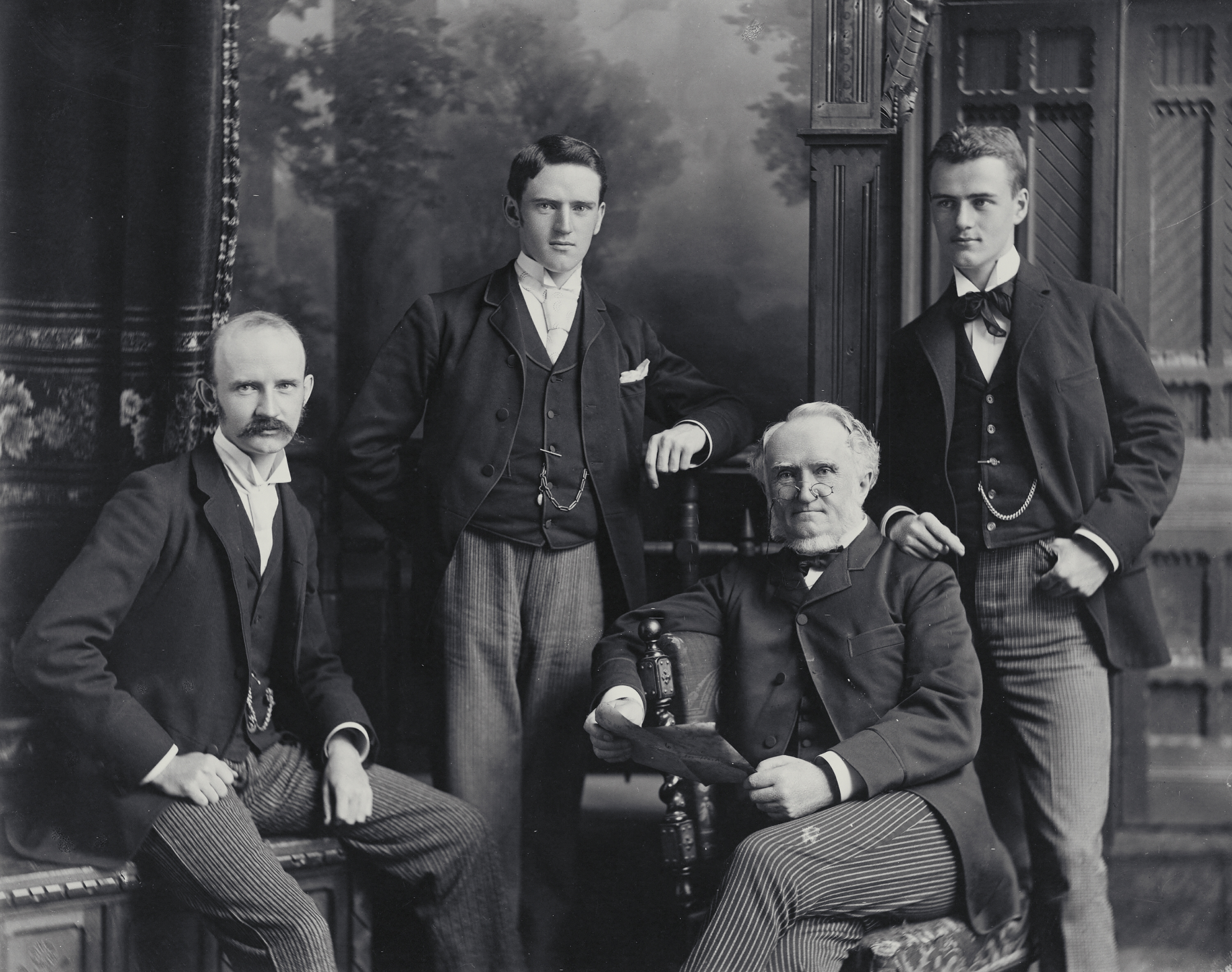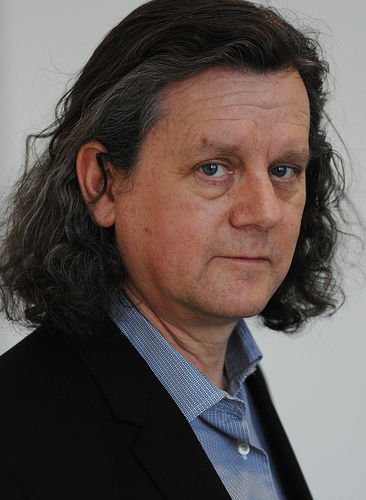Friedrich Karl von Bruemmer, CM, RCA, photographer, writer, researcher (born 26 June 1929 in Riga, Latvia; died 17 December 2013 in Montreal, QC). Latvian Canadian wildlife photographer Fred Bruemmer spent much of his professional career in the Arctic. He was famous for photographing the flora and fauna of the North and the lifestyle of the Inuit. Bruemmer was a prolific writer and researcher who wrote more than 1,000 articles and 27 books. His extensive work in the circumpolar world reached an international audience. He was described in a 1980 Maclean’s article as “one of the least-known world-famous men in Canada.” He was made a Member of the Order of Canada in 1983.

Slave Labour During the Second World War
Fred Bruemmer was born to a well-to-do Baltic German family in Riga, Latvia. His family life was upended by the Second World War, which began when he was 10 years old. As Adolf Hitler ordered ethnic Germans to return home and Latvia came under the control of the Soviet Union, the Bruemmer family left for Nazi-occupied Poland. When the Soviets defeated the Nazis in Poland, the Bruemmer family attempted to flee to safety (their German heritage and upper-class status made them targets), but they were caught. Bruemmer’s parents were murdered, and he was sent to a Soviet prison camp.
Though he was just a teenager, Bruemmer was used as slave labour in a Ukrainian coal mine. Aged 15, he weighed only about 70 pounds. Underweight and malnourished, he was able to pass as a 12-year-old, which got him an easier job in the mine — one that gave him opportunities to steal what he needed to survive the barbaric conditions.
After an attempted escape, Bruemmer was forced to work in a factory with other ethnic Germans. Many died due to torture and exhaustion. In total, Bruemmer spent 18 months in Soviet prison labour camps. (His future wife, Maud, was imprisoned by the Japanese for three years during the war.) In 1946, Bruemmer was resettled by Soviet authorities in what was then East Germany. The following year, he crossed the border into West Germany. Bruemmer chronicled this part of his life in his 2005 memoir, Survival: A Refugee Life.
Early Years in Canada
Fred Bruemmer immigrated to Canada in 1950. He settled in Kirkland Lake, Ontario, to work in the gold mines. During this time, he sought out a local photographer to teach him the art of photography and began exploring the local landscape. He purchased a motorcycle and ventured out on his own, exploring the dirt roads that led into the wilderness. Bruemmer later recalled that he was hooked on the Canadian Arctic after seeing James Bay. “I loved the Arctic — its rugged beauty, its haunting loneliness, its infinite space,” he once said. “It has the vastness of the sea, the grandeur of a Bach fugue.”
Bruemmer became a naturalized Canadian citizen in 1956. In the late 1950s, he quit his job in the gold mines and began working for local newspapers. He moved to Montreal in 1963 and worked for the Gazette as a photojournalist. He struck out on his own as a freelancer at the age of 33. He freelanced for about six years, contributing reports from the Middle East, North Africa and Europe. Some of his immersive-style reports from this period included whaling in the Azores, working in an Israeli kibbutz and herding reindeer in Finland.
Career Highlights
Around the same time, in the early to mid-1960s, Bruemmer began documenting the effects of High Arctic relocations on the Inuit population. Of his experiences in the Arctic at the time, he wrote, “I met a people traumatized by transition, suspended between two worlds; one beloved but dying, the other new, alluring, but essentially alien.”
Bruemmer spent much of his professional career photographing and writing about the Canadian Arctic, its wildlife and the Inuit. For nearly three decades, he spent winters in Montreal with his family and about six months each year exploring the Arctic. He often took exhaustive handwritten notes and thousands of photographs and learned to live as the Inuit he lived with instructed. He had a unique work life for a freelancer; he vowed to never accept assignments, preferring instead to send completed projects to editors. Publications that featured his work included Canadian Geographic, National Geographic, Natural History and Smithsonian.
Bruemmer completely immersed himself in his environment and among the Inuit. He had prolonged stays and intense journeys in the Arctic. An early example of this commitment can be found in Bruemmer’s first book, The Long Hunt (1969). It documents a 2,000-km, three-month-long polar bear hunt — a journey by dogsled that he undertook with two hunters.
Also in 1969, Bruemmer lived for six months with the family of Joseph Tikhek in Bathurst Inlet. He turned this experience into his next book, Seasons of the Eskimo: A Vanishing Way of Life (1971). This book, together with a 1964 photograph of a white harp seal pup, is generally considered to have made Bruemmer internationally famous. During his career, he travelled extensively throughout the circumpolar world, including to Alaska, Siberia, Greenland and Scandinavia. It is estimated that Bruemmer had likely rivalled some of the most famous Arctic explorers of all time, in terms of both the amount of time he spent there and the distances he crossed.
Arctic Expert
Though he was not formally trained, Bruemmer’s meticulous note-taking, expert photography and immersive approach to learning about the Arctic and the Inuit made him an expert in the field. His 1974 book, The Arctic, was described as “the most comprehensive single book on its subject matter ever presented.” Bruemmer’s books have been used extensively by the Inuit and are seen as invaluable records of Inuit culture. Bruemmer was highly critical of the Canadian government’s attempts to erase Inuit culture and, as he put it in a 1980 interview, to “make whites of them in one generation.” Bruemmer was horrified by the effects that this was having on Inuit society and culture.
Throughout his life, Bruemmer had several close calls with death, first as a refugee and a forced labourer during the Second World War, and then on several occasions while exploring the High Arctic. (He once had to frantically paddle his rowboat out of the way of a collapsing iceberg.) At the age of 57, he cheated death once more, as he received and fully recovered from a heart transplant.
Honours and Awards
When Fred Bruemmer was made a Member of the Order of Canada in 1983, he was described as “one of our foremost interpreters of the Arctic.” The University of Calgary made him a Fellow of the Arctic Institute of North America in 1976. Also a member of the Royal Canadian Academy of Arts, Bruemmer won the Royal Canadian Institute for Science’s Sandford Fleming Medal & Citation and received an honorary doctorate from the University of New Brunswick in 1989. In 2003, he won the North American Nature Photography Association’s Lifetime Achievement in Nature Photography Award. His 2005 memoir, Survival: A Refugee Life, won the Mavis Gallant Prize for Non-Fiction from the Quebec Writers’ Federation.
(See also Photography in Canada.)

 Share on Facebook
Share on Facebook Share on X
Share on X Share by Email
Share by Email Share on Google Classroom
Share on Google Classroom






